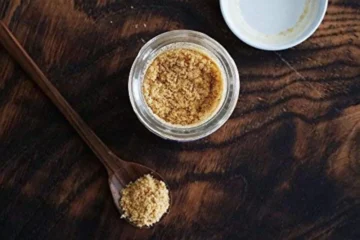How does hing (asafoetida) help with gut health, and what are its benefits in low-oil cooking?
Short Summary: Hing aids digestion and relieves bloating due to its carminative properties. When used in low-oil cooking, it enhances health benefits by avoiding unnecessary fats.
Long Answer:
- Hing has been a cornerstone in traditional medicine like Ayurveda for its ability to stimulate digestive enzymes and aid nutrient absorption.
- It relaxes the intestinal muscles, reducing gas formation and easing bloating effectively.
- In low-oil cooking, hing’s active compounds remain undiluted by fats, making it an excellent addition to healthy meals.
- Hing also exhibits antimicrobial properties, helping maintain a healthy gut microbiome, essential for overall health.
Which vegetables pair best with hing for maximum digestive benefits?
Short Summary: Root vegetables, cruciferous veggies, and leafy greens pair exceptionally well with hing to offer maximum digestive benefits.
Long Answer:
- Root vegetables like carrots, sweet potatoes, and turnips absorb hing’s flavors effectively, complementing its digestive benefits.
- Cruciferous vegetables like cauliflower, broccoli, and cabbage benefit from hing’s carminative properties, reducing discomfort caused by gas formation.
- Leafy greens such as spinach, kale, and fenugreek are nutrient-dense options that harmonize well with hing’s flavors and benefits.
- Gourds like zucchini and bottle gourd provide a hydrating base for hing-tempered recipes, making them lighter on the stomach.
Pairing hing with these vegetables not only enhances digestion but also creates wholesome, nutrient-packed dishes. Whether stir-fried, sautéed, or steamed, these combinations are versatile and delicious.
Can low-oil hing-tempered veggies help with bloating and indigestion?
Short Summary: Yes, low-oil hing-tempered vegetables reduce bloating and indigestion by soothing intestinal discomfort and preventing gas buildup.
Long Answer:
- Hing contains ferulic acid and volatile oils that effectively combat bloating and intestinal gas.
- The tempering process ensures the active compounds are evenly infused into vegetables, delivering consistent digestive benefits.
- Low-oil cooking keeps the meal light and easily digestible, preventing additional strain on the digestive system.
- Regular inclusion of these recipes in your diet can help maintain a balanced gut environment, reducing the likelihood of chronic indigestion or bloating.
This cooking style is particularly beneficial for those experiencing digestive issues after heavy or oil-rich meals, as it minimizes gastrointestinal distress.
What’s the best way to temper veggies with hing while keeping oil usage minimal?
Short Summary: Use 1-2 teaspoons of neutral oil, sauté hing with spices, and toss it with vegetables for a flavorful, low-oil tempering.
Long Answer:
- Opt for a neutral oil like sunflower or groundnut oil, as it allows hing’s aroma to shine without overpowering the dish.
- Heat a small quantity of oil in a pan and add a pinch of hing to release its potent fragrance.
- Enhance the tempering by adding mustard seeds, curry leaves, dried red chilies, and cumin seeds.
- Once the spices splutter, add your choice of diced or chopped vegetables, ensuring they are coated evenly with the aromatic blend.
- Cover and cook on low heat to retain nutrients and prevent overcooking. Stir occasionally to avoid sticking.
For an oil-free alternative, dry roast hing and spices before mixing them with steamed vegetables.
Are there any specific dietary restrictions or health conditions that would benefit from this type of cooking?
Short Summary: This method is ideal for individuals with high cholesterol, heart conditions, or digestive issues, and caters well to vegan or vegetarian diets.
Long Answer:
- Reduced oil content helps manage cholesterol levels, supporting cardiovascular health.
- People with digestive disorders such as IBS or chronic bloating benefit greatly from hing’s carminative properties.
- Low-oil cooking aligns well with calorie-conscious diets, aiding weight management effectively.
- Vegetarians and vegans can easily adapt this cooking style for wholesome, plant-based meals.
- This method is also beneficial for individuals recovering from digestive surgeries, offering gentle, gut-friendly nourishment.
Additional Tips for Cooking Low-Oil Hing-Tempered Veggies
Short Summary: Keep spices fresh, use non-stick cookware, and experiment with seasonal vegetables to enhance flavor and variety.
Long Answer:
- Always store hing in an airtight container to maintain its potency and aroma.
- Non-stick cookware allows minimal oil use without compromising on taste or texture.
- Experiment with locally available seasonal vegetables to diversify your meals and leverage their nutritional peak.
- Add a dash of fresh herbs like cilantro or dill at the end to elevate the flavor profile of your dish.





